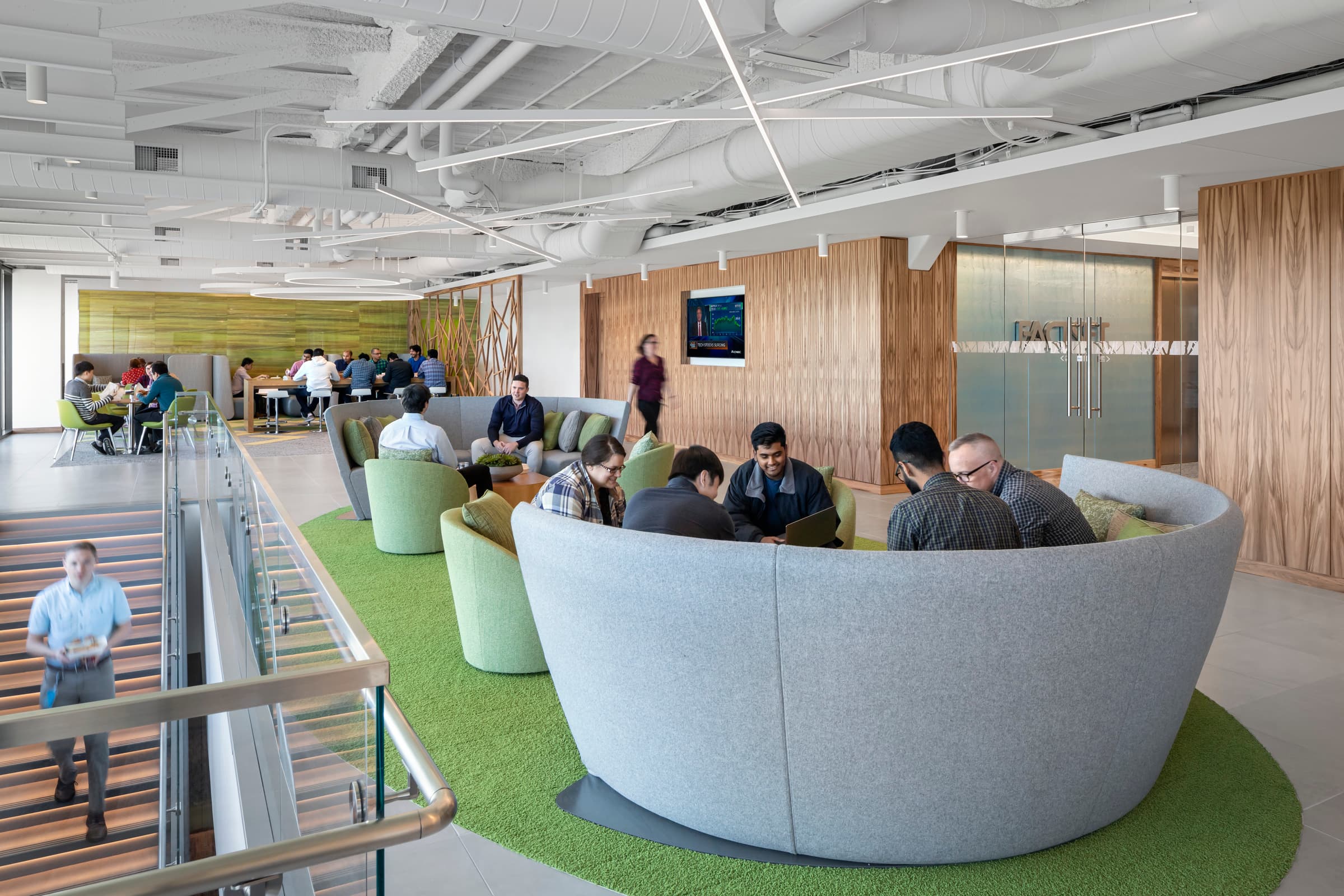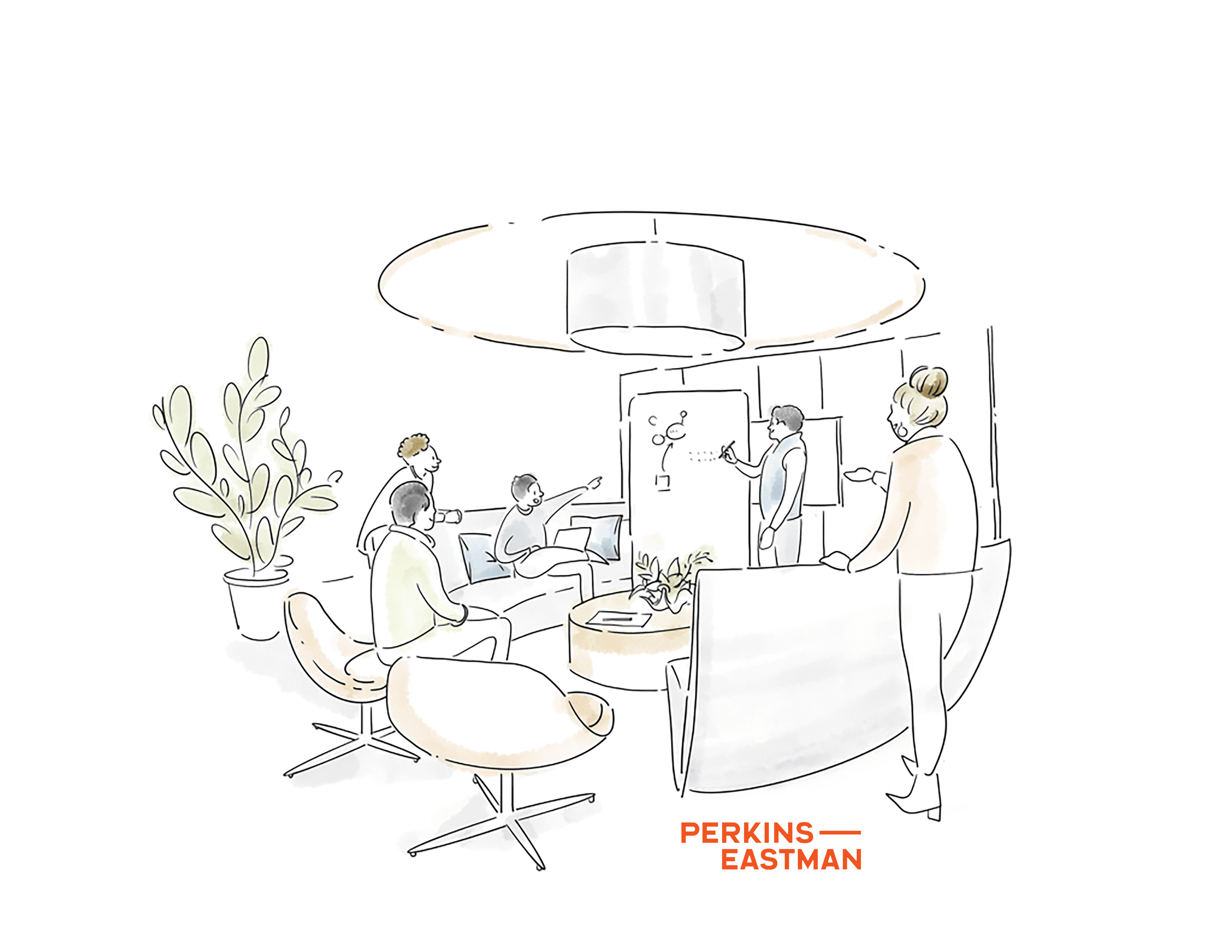When we are babies, we soak up the world like a sponge, intently watching the people around us to learn how to move, behave, and communicate. Though we’ve grown up, observational learning does not stop after childhood. In fact, we continue this behavior throughout our lives, picking up different manners, social norms, and specialized skills from watching other people—in all kinds of contexts—whether at home, at the grocery store, on the bus, at a ballgame, or in the office.
In common vernacular, listening in, observing, being a “fly on the wall” is often called eavesdropping. In the context of the workplace, this behavior, renamed “eaves-learning” happens all the time, and often goes unnoticed. Like eavesdropping, “eaves-learning” is the process of acquiring knowledge and skills from overhearing others’ discussions, informal mentorship, and spontaneous collaboration that occurs when working in close physical proximity to other people. It’s also something that cannot happen while working remotely.

Copyright Andrew Rugge/Courtesy Perkins Eastman
A 2023 survey of 140 employers in NYC identified that as a result of remote work, employees’ professional development has suffered. This is especially challenging for new and junior employees. Similarly, according to other surveys, professional development and training opportunities, as well as access to internal upward career mobility, are key factors in how long employees are likely to stay with their current company.
In our current work limbo, where work is not fully remote nor entirely back in the office, many are questioning the purpose of the physical office. We have all witnessed the many benefits of remote work, including decreased commuting time, flexible schedules, and better work/life balance. Indeed, a 2022 survey found that 64% of the global workforce would prefer to look for a new job over going back to the office five days a week.
But physically working in an office also has many advantages, and eaves-learning is at the top of the list. How can we maximize these benefits and incentivize in-office work? We turned to research in psychology and neuroscience to identify key benefits of working together in person:
- Eaves-Learning: Observational learning thrives in a physical workspace, facilitating creativity and professional development by helping us pick up new skills and knowledge.
- Better Communication: Compared to online communication, face-to-face conversations feel less cognitively taxing, more natural, better in quality, and result in greater satisfaction. Nonverbal cues, which can make up a large part of communication, are largely absent over a video call (and totally absent over the phone).
- Stronger Social Bonds: Our brains are wired to process faces, and eye contact is like a superpower—research suggests it boosts positive emotions, and can even facilitate empathy, compared to averted gaze.
- Improved Well-being: Social interactions make us happier, and both the quantity and quality of these interactions matter for our well-being.
- Better Attention and Memory: Eye contact boosts memory for spoken words, and in-person conversations help us concentrate better. Also, research shows strong positive responses and improved attentional capacity in response to natural scenes (indoor or outdoor).

Artwork by Jingxian Xu, Perkins Eastman
With these benefits in mind, how can we tailor office design to maximize the benefits of working together in person?
- Promote Transparency: Offer open areas for skills-based work, showcase ongoing projects, and mix up seating to encourage chance encounters.
- Prioritize Co-Creation: Provide spaces and tools for different kinds of collaboration, like huddle rooms with writeable surfaces, technology-equipped meeting rooms, and informal seating areas with sofas and armchairs.
- Maximize Social Bonds: Create opportunities for both formal and informal social interaction through central gathering spaces, such as a communal lunch table, and diverse collaboration areas.
- Enhance Well-being: Spaces that can easily be personalized and controlled, such as through lighting and height-adjustable desks, and involving employees in design decisions, can make a big difference in their well-being and productivity.
- Sharper Focus and Memory: Use natural elements (e.g., plants, exposed brick, wood floors, stone counters) and align schedules to encourage ‘creative collisions’ and keep the office buzzing.
The future of office design revolves around embracing the power of in-person interactions through thoughtful design. By crafting environments that fully utilize the advantages of being in-person, we can improve our work and well-being.


